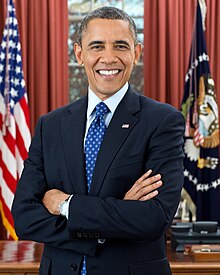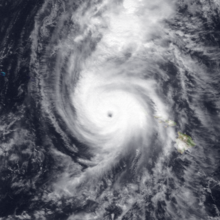The Hawaii Portal Hawaii (/həˈwaɪ.i/ hə-WY-ee; Hawaiian: Hawaiʻi [həˈvɐjʔi, həˈwɐjʔi]) is an island state of the United States, in the Pacific Ocean about 2,000 miles (3,200 km) southwest of the U.S. mainland. It is the only state not on the North American mainland, the only state that is an archipelago, and the only state in the tropics. Hawaii consists of 137 volcanic islands that comprise almost the entire Hawaiian archipelago (the exception, which is outside the state, is Midway Atoll). Spanning 1,500 miles (2,400 km), the state is physiographically and ethnologically part of the Polynesian subregion of Oceania. Hawaii's ocean coastline is consequently the fourth-longest in the U.S., at about 750 miles (1,210 km). The eight main islands, from northwest to southeast, are Niʻihau, Kauaʻi, Oʻahu, Molokaʻi, Lānaʻi, Kahoʻolawe, Maui, and Hawaiʻi, after which the state is named; the latter is often called the "Big Island" or "Hawaii Island" to avoid confusion with the state or archipelago. The uninhabited Northwestern Hawaiian Islands make up most of the Papahānaumokuākea Marine National Monument, the largest protected area in the U.S. and the fourth-largest in the world. Of the 50 U.S. states, Hawaii is the eighth-smallest in land area and the 11th-least populous; but with 1.4 million residents, it ranks 13th in population density. Two-thirds of Hawaii residents live on O'ahu, home to the state's capital and largest city, Honolulu. Hawaii is among the country's most diverse states, owing to its central location in the Pacific and over two centuries of migration. As one of only six majority-minority states, it has the only Asian American plurality, the largest Buddhist community, and largest proportion of multiracial people in the U.S. Consequently, Hawaii is a unique melting pot of North American and East Asian cultures, in addition to its indigenous Hawaiian heritage. Settled by Polynesians sometime between 1000 and 1200 CE, Hawaii was home to numerous independent chiefdoms. In 1778, British explorer James Cook was the first known non-Polynesian to arrive at the archipelago; early British influence is reflected in the state flag, which bears a Union Jack. An influx of European and American explorers, traders, and whalers soon arrived, leading to the decimation of the once-isolated indigenous community through the introduction of diseases such as syphilis, tuberculosis, smallpox, and measles; the native Hawaiian population declined from between 300,000 and one million to less than 40,000 by 1890. Hawaii became a unified, internationally recognized kingdom in 1810, remaining independent until American and European businessmen overthrew the monarchy in 1893; this led to annexation by the U.S. in 1898. As a strategically valuable U.S. territory, Hawaii was attacked by Japan on December 7, 1941, which brought it global and historical significance, and contributed to America's entry into World War II. Hawaii is the most recent state to join the union, on August 21, 1959. In 1993, the U.S. government formally apologized for its role in the overthrow of Hawaii's government, which had spurred the Hawaiian sovereignty movement and has led to ongoing efforts to obtain redress for the indigenous population. (Full article...) This is a Featured article, which represents some of the best content on English Wikipedia..
Barack Hussein Obama II (born August 4, 1961) is an American politician who served as the 44th president of the United States from 2009 to 2017. As a member of the Democratic Party, he was the first African-American president in United States history. Obama previously served as a U.S. senator representing Illinois from 2005 to 2008, as an Illinois state senator from 1997 to 2004, and as a community service organizer, civil rights lawyer, and university lecturer. Obama was born in Honolulu, Hawaii. He graduated from Columbia University in 1983 with a Bachelor of Arts degree in political science and later worked as a community organizer in Chicago. In 1988, Obama enrolled in Harvard Law School, where he was the first black president of the Harvard Law Review. He became a civil rights attorney and an academic, teaching constitutional law at the University of Chicago Law School from 1992 to 2004. He also went into elective politics; Obama represented the 13th district in the Illinois Senate from 1997 until 2004, when he successfully ran for the U.S. Senate. In 2008, after a close primary campaign against Hillary Clinton, he was nominated by the Democratic Party for president and chose Delaware Senator Joe Biden as his running mate. Obama was elected president, defeating Republican Party nominee John McCain in the presidential election, and was inaugurated on January 20, 2009. Nine months later he was named the 2009 Nobel Peace Prize laureate, a decision that drew a mixture of criticism and praise. (Full article...)This is a Good article, an article that meets a core set of high editorial standards.
Charles Kanaʻina (Kanaʻina II c. May 4, 1798 – March 13, 1877), was an aliʻi (hereditary noble) of the Kingdom of Hawaii, prince consort of Kuhina Nui, Kaʻahumanu III and father of William Charles Lunalilo, the 6th monarch of the Kamehameha Dynasty. Kanaʻina was a descendant of several figures from ancient Hawaiian history, including Liloa, Hakau and Umi-a-Liloa of Hawaiʻi Island as well as Piilani of Maui. He served on both the Privy Counsel and in the House of Nobles. He was named after his uncle Kanaʻina, a name that means "The conquering" in the Hawaiian Language. This uncle greeted Captain James Cook in 1778 and confronted the navigator before he was killed. His wife Miriam Auhea Kekāuluohi was a widow and niece of Kamehameha I. She was also married to Kamehameha II before he converted to Christianity and gave up all but one wife. Kanaʻina and Kekāuluohi lived in a traditional aliʻi style home in a sacred neighborhood in Honolulu called Pohukaina near Kekūanaōʻa, Kaʻahumanu and their offspring. The compound would eventually become the Iolani Palace (the official Royal Residence of the Hawaiian Royal Family) and Palace Walk when Kekūanaōʻa built Hale Aliʻi in the center of the families estates as a gift to his daughter Victoria Kamāmalu. Kanaʻina kept his property at the palace until his death and would be the only original owner to do so while the Palace was in use, living there through five monarchs, from the 1820s to 1877. Kanaʻina's son, William Charles Lunalilo, was named by Kamehameha III as an heir to the throne of the kingdom and ascended in 1873 while his father still lived. Lunalilo died only a year later, three years before his father's death on March 13, 1877. Having not re-written his will, which left everything to his son who had predeceased, Kanaʻina died intestate. Probate hearings proceeded for 5 years. On final adjudication his property was auctioned with the proceeds going to several of Kanaʻina's cousins including Ruth Keelikōlani and Bernice Pauahi Bishop. (Full article...)Selected Picture - 'Ōlelo (Language) -This section is here to highlight some of the most common words of the Hawaiian Language, ʻŌlelo, that are used in everyday conversation amongst locals.
Makai
Towards the sea, in the direction of the sea State Facts
State Symbols:
Selected article -Hurricane Iniki (/iːˈniːkiː/ ee-NEE-kee; Hawaiian: ʻiniki meaning "strong and piercing wind") was a hurricane that struck the island of Kauaʻi on September 11, 1992. It was the most powerful hurricane to strike Hawaiʻi in recorded history, and the only hurricane to directly affect the state during the 1992 Pacific hurricane season. Forming on September 5, 1992, during the strong 1990–1995 El Niño, Iniki was one of eleven Central Pacific tropical cyclones during that season. It attained tropical storm status on September 8 and intensified into a hurricane the next day. After abruptly turning north, Iniki struck Kauaʻi at peak intensity; it had winds of 145 mph and reached Category 4 status on the Saffir–Simpson hurricane scale. Winds gusted to 225 mph (362 km/h). It was the first hurricane to hit the state since Hurricane Iwa in the 1982 season, and the only known major hurricane to hit the state. Iniki dissipated on September 13, about halfway between Hawaii and Alaska. (Full article...)Did you know? -
Hawaii News
Wikinews Hawaii portal
Quotes -"Hawaiʻi loa kū like kākou kū paʻa me ka lokahi e kū kala me ka wiwoʻole. ʻOnipaʻa kākou, ʻonipaʻa kākou, a lanakila nā kini e. E ola, e ola, e ola nā kini e." — Dennis Pavao On this day...There are no anniversaries listed for this day. Related portalsTopicsCategoriesAssociated WikimediaThe following Wikimedia Foundation sister projects provide more on this subject:
SourcesDiscover Wikipedia using portals |

























